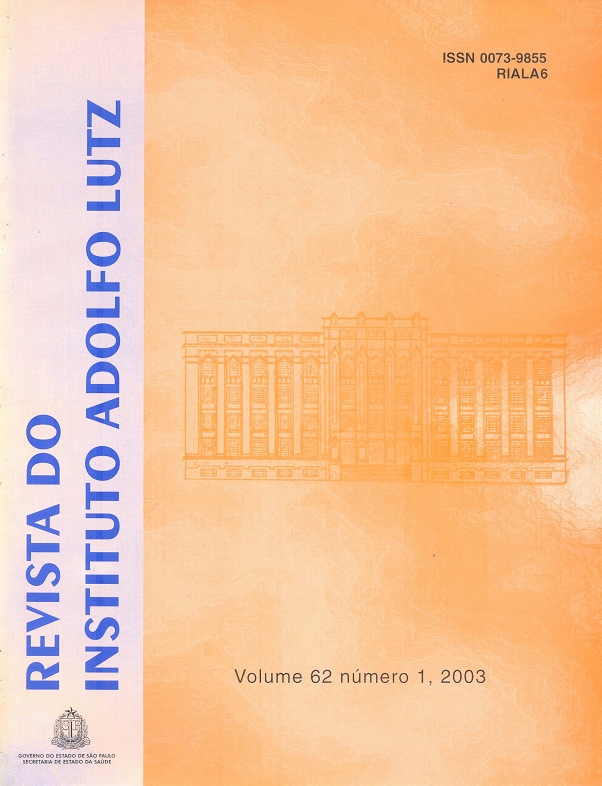Abstract
The use of diatomaceous earth (DE) and other inert dusts has become a common practice for insect control in stored products. They may be used in association with fumigants, creating a physical
barrier against infestation in the lower and upper grain mass by insects or coming from outside the storage
structure. A methodology, which permits the detection of inert dust, in this case, DE - in grains is of great importance for the industry and official laboratories. Thus, the objective of this work was to develop a method for detecting the presence of DE particles on wheat kernels. Samples of 1 Kg of wheat grains were treated with different dosages of DE: 250 g/t; 500 g/t; 750 g/t; 1000 g/t; 2000 g/t; 4000 g/t; 6000 g/t; 8000 g/t; 10,000 g/t. The best results were obtained using filtered water for washing the grains and extracting the DE particles, instead of using 95% alcohol as it is prescribed in the original method. Fragments/carapaces of diatomace algae were recovered from all samples, even those treated with small amounts of
the product. The proposed method proved to be adequate for detecting the presence of DE fragments/carapaces and we suggest to be adopted as an official method.
References
1. Andrey, D.E.; Clesceri, L.S.; Greenberg, A.E. (eds.). Standard methods for the examination of water and wastewater. 19th Ed., Published by American Public Heath Association, Washington, DC, 1995, p 10-110 – 10-142, 10-143 – 10-165.
2. Arthur, F. Toxicity of diatomaceous earth to red flour beetle and confused flour beetles (Coleoptera:Tenebrionidae) Effects of temperature and relative humidity. Journal of Economic Entomology, 93: 526-532, 2000.
3. Dupchak, L. Detecção de sujidades e avaliação de uma formulação de pós inertes para o controle de insetos em grãos e farinhas de trigo. (Tese de Mestrado em Entomologia – Setor de Ciências Biológicas, Universidade Federal do Paraná). Curitiba, PR, 1997, 77p.
4. Fields, P.G.; Korunic, Z. Diatomaceous earth to control stored-grain insects. In: International Congress of Entomology, 21., Foz do Iguaçú, 2000. Abstracts... Londrina: Embrapa Soja. Vol 2, p. 1013.
5. Fields, B. Application technology and usage patterns of diatomaceous earth in stored product protection. In: International Working Conference on Stored-product Protection 7., Beijing, 1998. Proceedings..., Chengdu, v.1, p.785-789.
6. Johnson, R.M.; Jackson, R.L., Anzulovic, B.M. Microscopic identification of diatoms on treated wheat. Agronomy Journal, 56: 241, 1964.
7. Korunic, Z. Diatomaceous earth, a group of natural insecticides. Journal of Stored Product Research, Exeter, 34:2/3: 87-97, 1998.
8. Lorini, I.; Schneider, S. Pragas de grãos armazenados: resultados de pesquisa. Passo Fundo: EMBRAPA-CNPT, 1994, 48p.
9. Mewis, I.; Reichmuth, C. Diatomaceous earth against the coleoptera granary weevil Sitophilus granarius (Curculionidae). The confused flour beetle Tribolium castaneum (Tenebrionidae). The Mealworm Tenebrio molitor (Tenebrionidae). In: International Working Conference on Stored-product Protection, 7., Beijing, 1998. Proceedings... Chengdu, v.1, p.966-973.
10. Paula, M.C.Z de. Manutenção da Qualidade do Arroz Armazenado: Monitoramento e Controle de Insetos. (Tese de Doutorado em Entomologia - Setor de Ciências Biológicas, Universidade Federal do Paraná). Curitiba, PR, 2001, 74p.
11. Pereira, P.R.V.S. Contribuição para o manejo integrado de pragas de produtos armazenados. (Tese de Doutorado em Entomologia - Setor de Ciências Biológicas, Universidade Federal do Paraná). Curitiba, PR, 1999, 62p.
12. Pinto Jr., A. Uso de pós inertes no controle de insetos de grãos armazenados. (Tese de Mestrado em Entomologia – Setor de Ciências Biológicas, Universidade Federal do Paraná). Curitiba, PR, 1994, 62p.
13. Pinto Jr., A. Utilização de terra diatomácea no controle de pragas de armazenamento e domissanitárias. (Tese de Doutorado em Entomologia - Setor de Ciências Biológicas, Universidade Federal do Paraná). Curitiba, PR, 1999, 114p.
14. Rupp, M.M.M. Detecção de sujidades e avaliação do pó inerte para o controle de insetos em cevada cervejeira e malte armazenados. (Tese de Mestrado em Entomologia – Setor de Ciências Biológicas, Universidade Federal do Paraná). Curitiba, PR, 1996, 68p.
15. Silva e Sousa, M.E. 1967. Estudo do interesse de pós inseticidas inertes no combate à pragas dos produtos armazenados. Garcia de Lorca (Lisboa), 15: 367-408, 1967.
16. Subramanyam, Bh.; Swason, C.L.; Madamanchi, N.; Norwood, S. Effectivness of Insecto a new diatomaceous earth formulation in supressing severalstored-graininsectspecies. In: International Working Conference on Stored product Protection, 6. , Canberra, 1994. Proceedings... Wallingsdorf. v. 2, p.650-659.
17. Subramanyam, Bh., Madamanchi, N.; Norwood, S., 1998. Effectiveness of Insecto applied to shelled maize against stored-product insect larvae. Journal of Economic Entomology, 91: 280-286, 1998.
18. Subramanyan, Bh.; Roesli, R. Inert dusts. In: Subramanyan, Bh. Hagstrum, D. W. (eds). Alternatives to pesticides in stored-product IPM. 1 ed. Massachusettes, Kluwer Academic Publishers Norwell, 2000, p.321-380.

This work is licensed under a Creative Commons Attribution 4.0 International License.
Copyright (c) 2003 Revista do Instituto Adolfo Lutz
